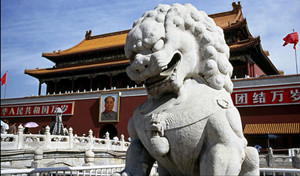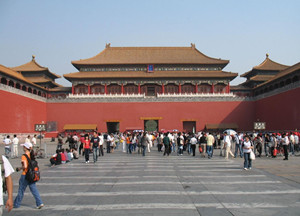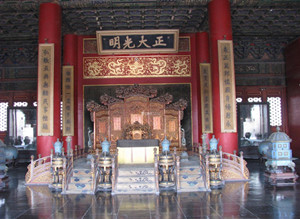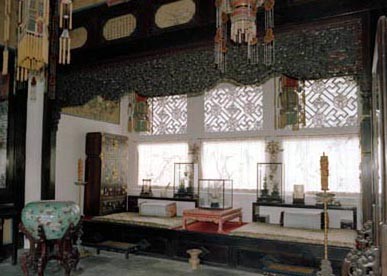 Ask a Question
Ask a QuestionPost Time: Jul 26 2012 By Sophie Huang
In the early July, I came to the capital Beijing on business. Since it was my first time there, along with my colleagues, I spend a little time to visit the Forbidden City, also called the Imperial Palace or the Palace Museum, which is well-known as the largest and best-preserved palatial complex existing now. 
After we ate a bowl of Stewed Liver, one of Beijing local special snacks, as our breakfast, we began our journey.
We need to get to the Tiananmen gate tower, then we can get into the Forbidden City. While standing at the gate tower, there was a bird's eye view of the whole Tiananmen Square. This place was the right place which Chairman Mao stood in the founding ceremony delivering a speech. We stood there to experience the magnificent scene at that time.
Got through Tiananmen, then Duanmen, we came to the front entrance of the Forbidden City--Meridian Gate (or Wumen), which was a square surrounded by three walls. There were three dorrways in the front one dorrway both two sides. 
After we got into the Meridian Gate, we were really in the Forbidden City. At first, we went across the Inner Golden Water River, in front of us there was a stretch of open square and in the middle there was a palatial gate which was called Gate of Supreme Harmony (or Taihemen). There was a big bronze crouching lion on both sides of the gate, and this pair of the lion was called ‘The First Lion in China’. All the gate in the Forbidden City were actually Alhambresque buildings,
Got through the Gate of Supreme Harmony, we saw a larger square. In front of it, there was a bigger palace which was called Hall of Supreme Harmony (or Taihe Palace), also known as the highest position in the imperial palace. It was the right place that the emperor talked about politics with his ministers. The Hall of Central Harmony ( or Zhonghe Palace) and the Hall of Preserving Harmony ( or Baohe Palace) was right behind the Taihe Palace. These three palaces constituted the front palace of the Forbidden City. Beyond it there was the imperial harem. 
Walked along the Baohe Palace, we passed the Gate of Celestial Purity (or Qianqingmen), and then came to the Palace of Heavenly Purity ( or Qianqing Palace). The palace was the sleeping room of the Emperor Kangxi and Shunzhi. Till the period of the Yongzheng Emperor, he moved his palace to the Hall of Mental Cultivation ( or Yangxin Palace). From then on, the emperors had officially lived into Yangxin Palace.
Then we came to the The Palace of Earthly Tranquility (or Kunning Palace), which was the living place of queens in Ming Dynasty. Also, it was the bridal chamber of the emperor in Qing Dynasty. The decoration in Kunning Palace has not been changed even today.
Stood in front of the Palace of Gathering Excellence ( or Chuxiu Palace), we saw the bed slept by Xiunv, who were waiting for the selection by the emperors. The later Dowager Empress Cixi was one of thses Xiunv. 
In the Jewel House, we saw many kinds of rare different treasured including the imperial jade seal, dragon robes and imperial crowns and so on.
It was really a pity that we didn’t have enough time to see all of the sceneries in the Forbidden City because there were too many. We were reluctant to leave the Forbidden City at 4 p.m.. We felt really amazing about the royal palace lived by more than twenty Chinese emperors. We believe that the Forbidden City is really one of the great destinations which is worth your visit.

Position:Travel Consultant
Life without friend is death without a witness, while traveling is a good way to make friends. Hence I love traveling. Don't you find that you are having less and less friends while you are focusing on your work? If so, come on, join us! We are Top China Travel, providing you a tailor-made tour to release yourself, enjoy marvelous scenery, experience different culture and custom and meet people.